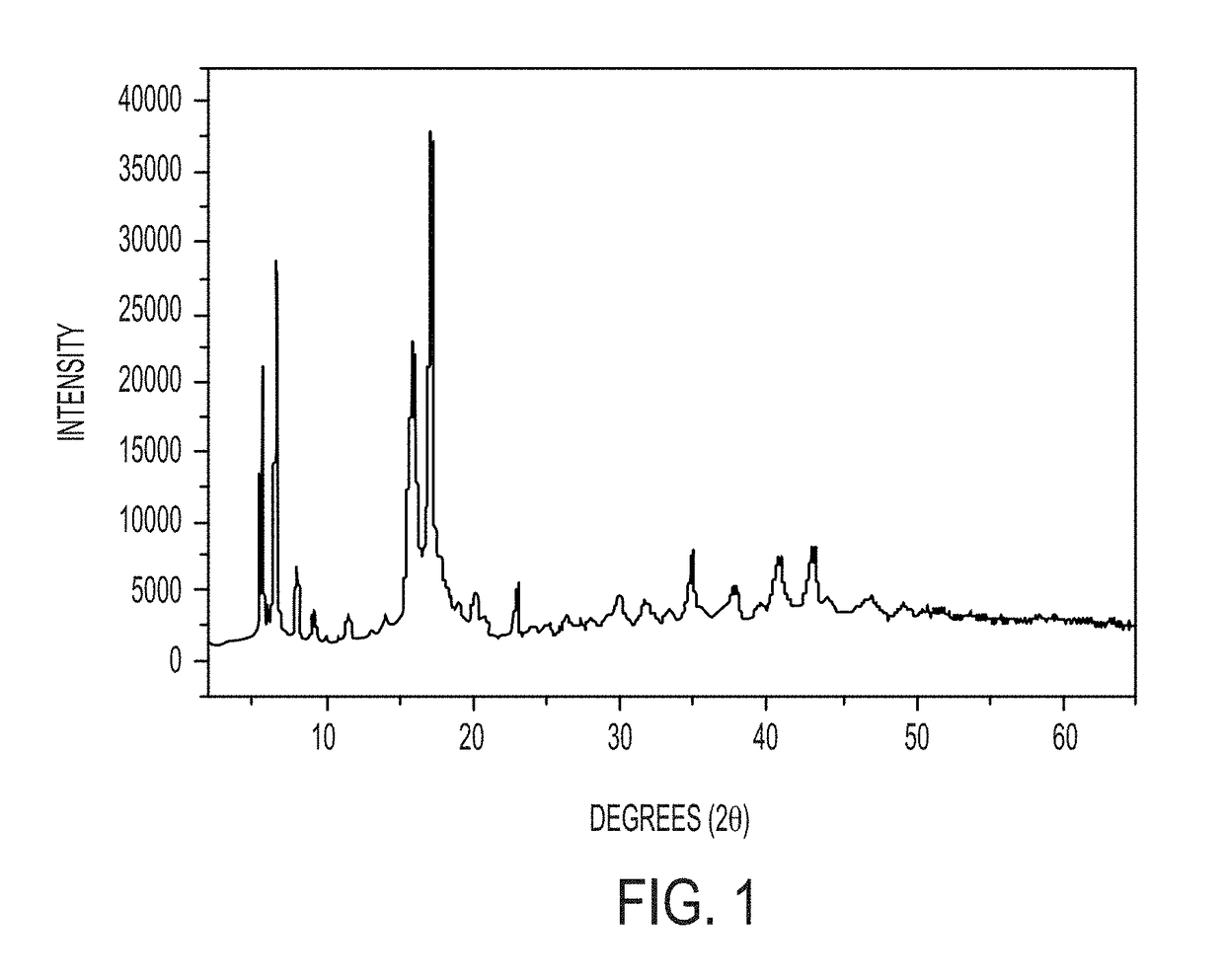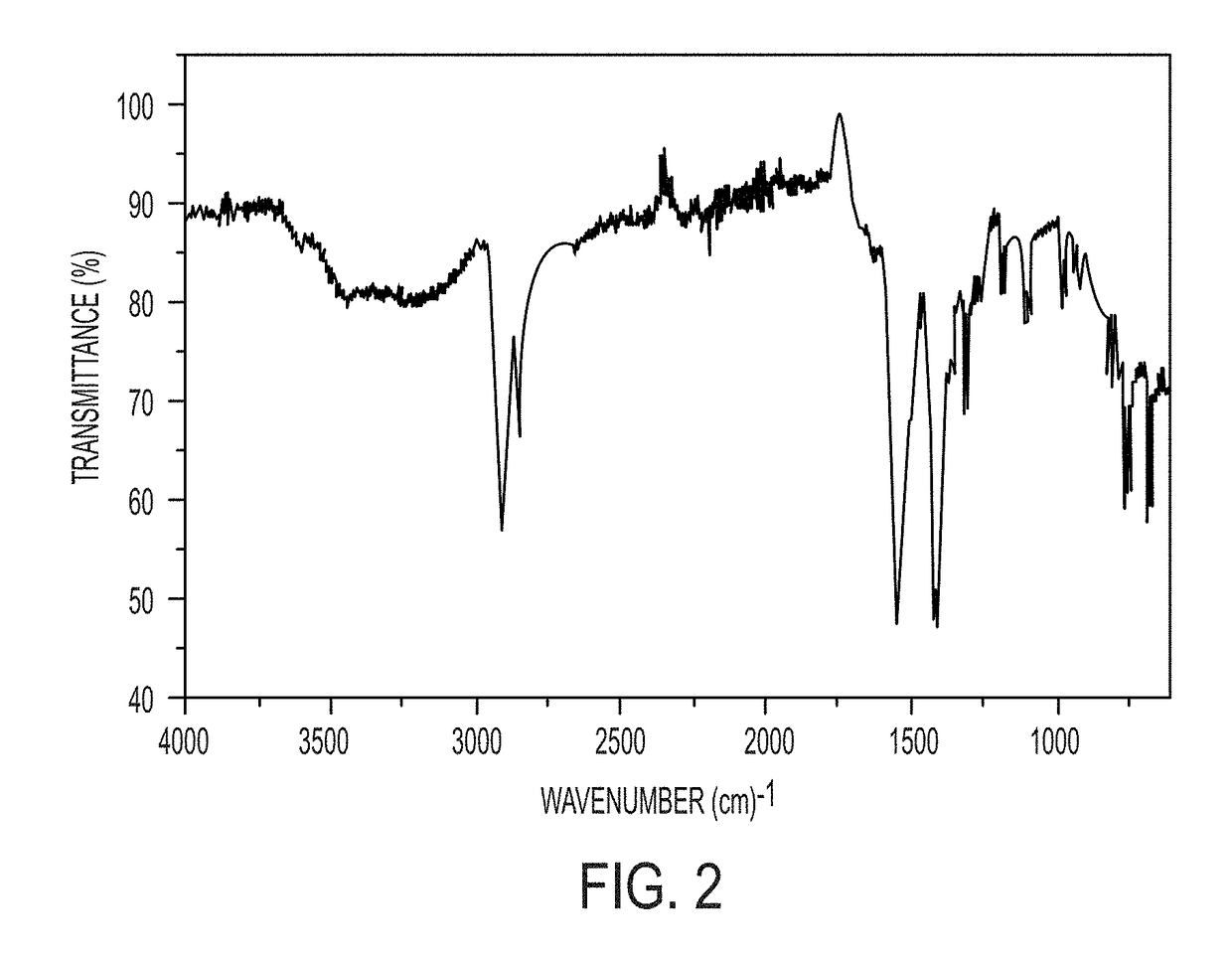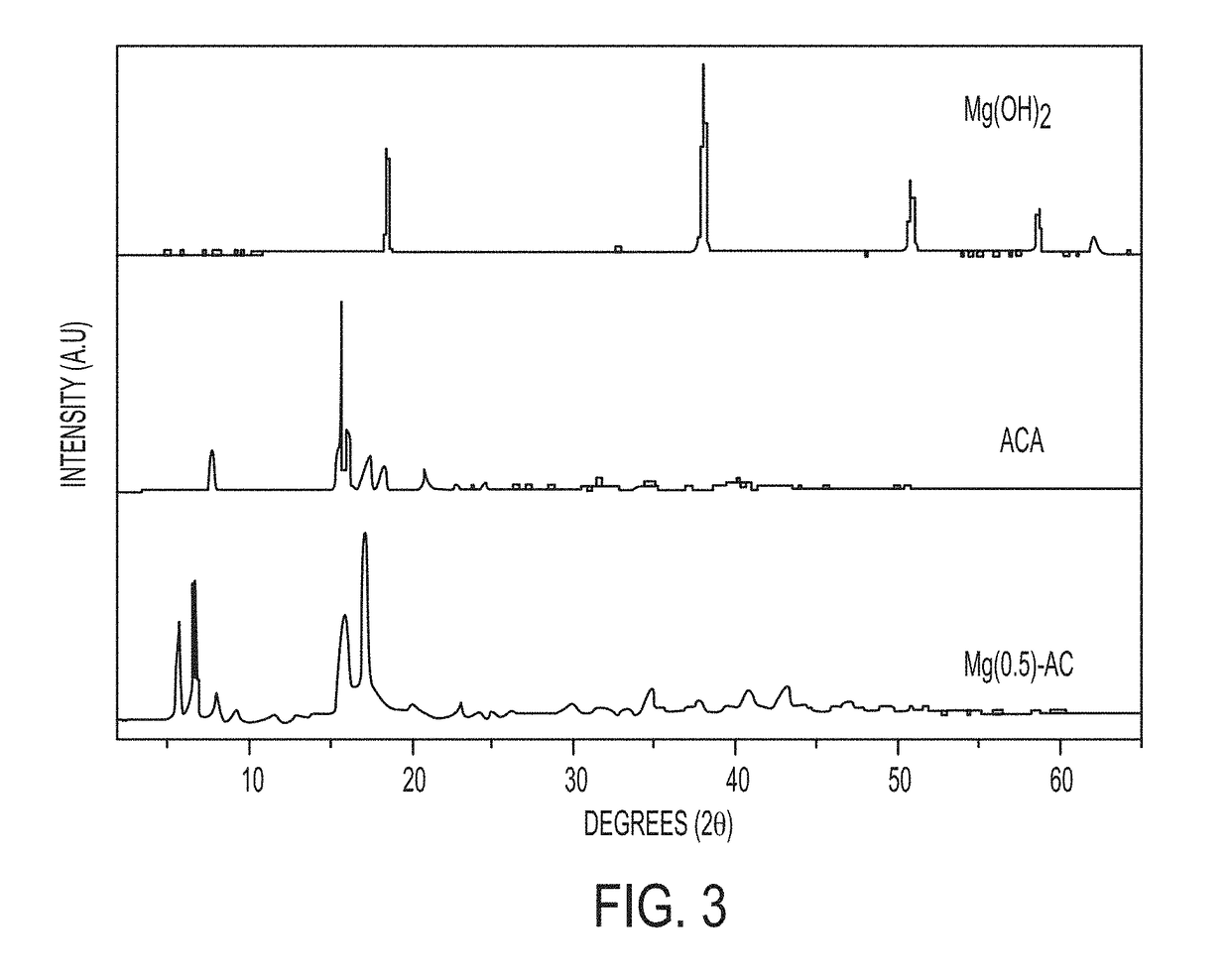Synthesis of magnesium adamantane salts and magnesium oxide nanocomposites, and systems and methods including the salts or the nanocomposites
a technology of magnesium adamantane and magnesium oxide, which is applied in the direction of catalyst activation/preparation, organic compound/hydride/coordination complex catalyst, physical/chemical process catalyst, etc., can solve the problems of limited potential exploitation of these hydroxides, limited interlayer chemistry, and low thermal stability
- Summary
- Abstract
- Description
- Claims
- Application Information
AI Technical Summary
Benefits of technology
Problems solved by technology
Method used
Image
Examples
example 1
Synthesis and Physical Characterization of Mg(0.5)-Adamantane Carboxylate Salt
[0078]Mg-adamantane (Mg-AD) compounds were hydrothermally synthesized by mixing Mg(OH)2 and 1-adamantane carboxylic acid (ACA) in amounts to provide a 1:2 molar ratio of Mg2+ to ACA to form a reaction mixture, then transferring the reaction mixture to a Teflon-lined stainless-steel autoclave and heating the reaction mixture at 150° C. for 24 h. The reactants were mixed by stirring for 1 h on a magnetic stirrer. The resultant product, Mg(0.5)-AC (where 0.5 refers to the original Mg2+-to-ACA mixing ratio and “AC” refers to adamantane carboxylate) was vacuum filtered, washed with a copious amount of water, and then dried at 65° C. for 24 h. Products were characterized by powder X-ray diffraction (PXRD), infra-red (IR) spectroscopy, scanning electron microscopy (SEM), thermo gravimetric analysis (TGA), atomic force microscopy (AFM), and transmission electron microscopy (TEM).
[0079]The Mg(0.5)-AC was analyzed b...
example 2
Dispersion and Exfoliation of Mg(0.5)-Adamantane Carboxylate Salt
[0084]Based on its physical characterizations, the Mg(0.5)-AC has been found to be a layered structure with high aspect ratio and high thermal stability. Therefore, the Mg(0.5)-AC is believed to have all the qualities to become a good filler material for various nanocomposites. To check the suitability of Mg(0.5)-AC to blend with various polymers and ability to form dispersions, various polar and nonpolar solvents were used. The dispersion studies were carried out by using six different solvents with a variety of physical properties. Dispersion studies of the product in various solvents were carried out on 100 mg of Mg(0.5)-AC in 100 mL of various solvents to form a suspension that was stirred for 24 h on a magnetic stirrer. The results of the study are tabulated in TABLE 1.
TABLE 1SolventSolvent TypeDispersion CharacteristicWaterPolarNo dispersionEthanolPolarStable dispersionTetrahydrofuranPolarStable dispersionN,N-Dim...
example 3
Effect of Mg Supersaturation on Phase Formation and Morphology
[0088]The supersaturation of the initial reaction mixture plays a crucial role in phase formation of any material. The Mg(0.5)-AC prepared in Example 1 had a Mg2+ / ACA ratio of 1:2. To characterize the effect of Mg2+ / ACA ratio on the Mg-adamantane carboxylate phase formation, Mg(1.0)-AC was prepared by the same synthetic route as described in Example 1, except that the initial reactants were mixed to provide a Mg2+ / ACA ratio of 1:1. Thus, the Mg(1.0)-AC was prepared with a larger molar fraction of Mg2+ compared to the Mg(0.5)-AC of Example 1.
[0089]The PXRD pattern of the Mg(1.0)-AC in FIG. 7 retains all the reflections corresponding to Mg-AC, as compared to the PXRD of Mg(0.5)-AC (FIG. 1). In addition, the Mg(1.0)-AC PXRD spectrum shows several high intensity reflections (marked with *) believed to arise from unreacted Mg(OH)2. The appearance of unreacted starting material in the Mg(1.0)-AC illustrates that stoichiometric ...
PUM
| Property | Measurement | Unit |
|---|---|---|
| Temperature | aaaaa | aaaaa |
| Temperature | aaaaa | aaaaa |
| Temperature | aaaaa | aaaaa |
Abstract
Description
Claims
Application Information
 Login to View More
Login to View More - R&D
- Intellectual Property
- Life Sciences
- Materials
- Tech Scout
- Unparalleled Data Quality
- Higher Quality Content
- 60% Fewer Hallucinations
Browse by: Latest US Patents, China's latest patents, Technical Efficacy Thesaurus, Application Domain, Technology Topic, Popular Technical Reports.
© 2025 PatSnap. All rights reserved.Legal|Privacy policy|Modern Slavery Act Transparency Statement|Sitemap|About US| Contact US: help@patsnap.com



